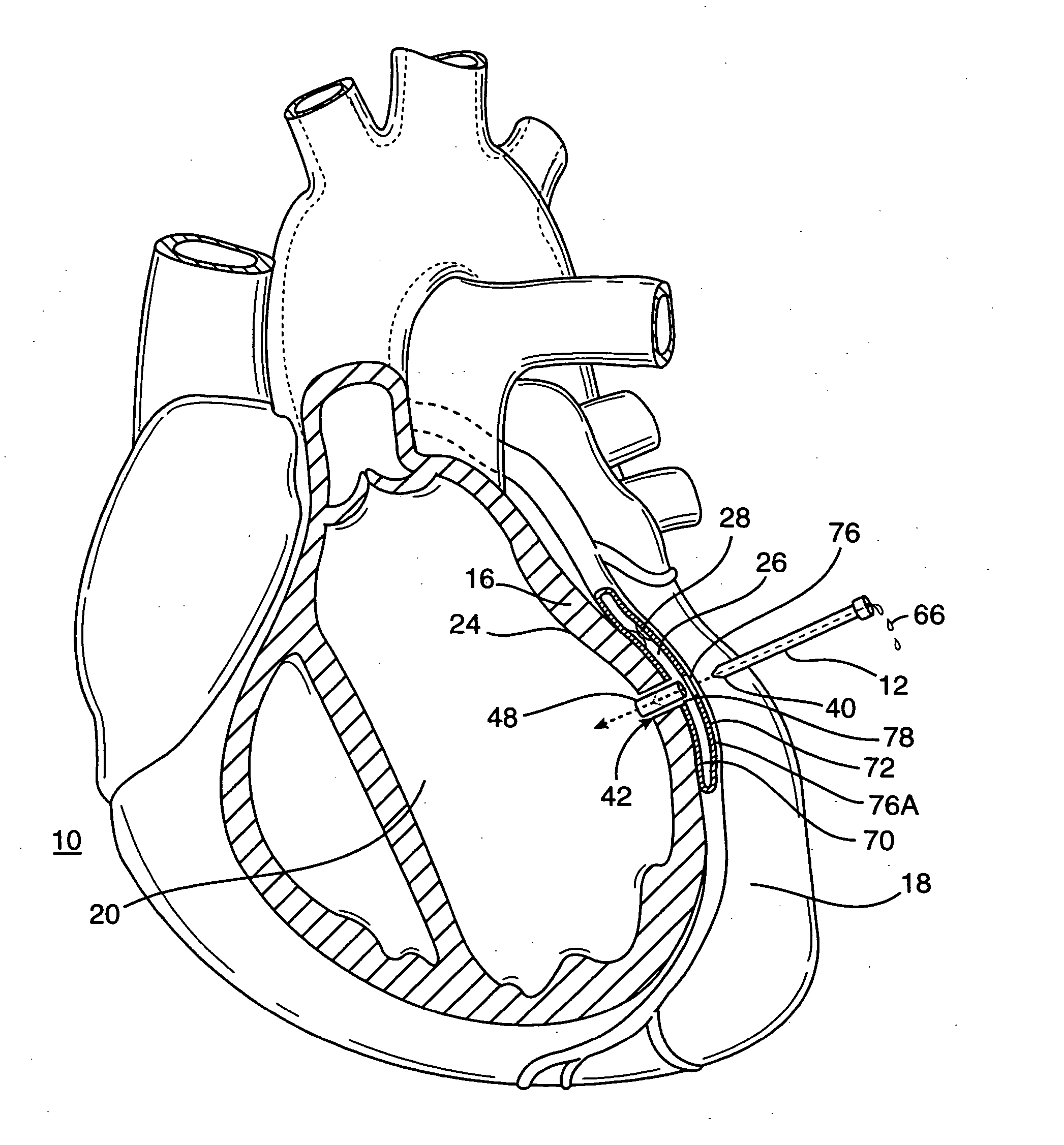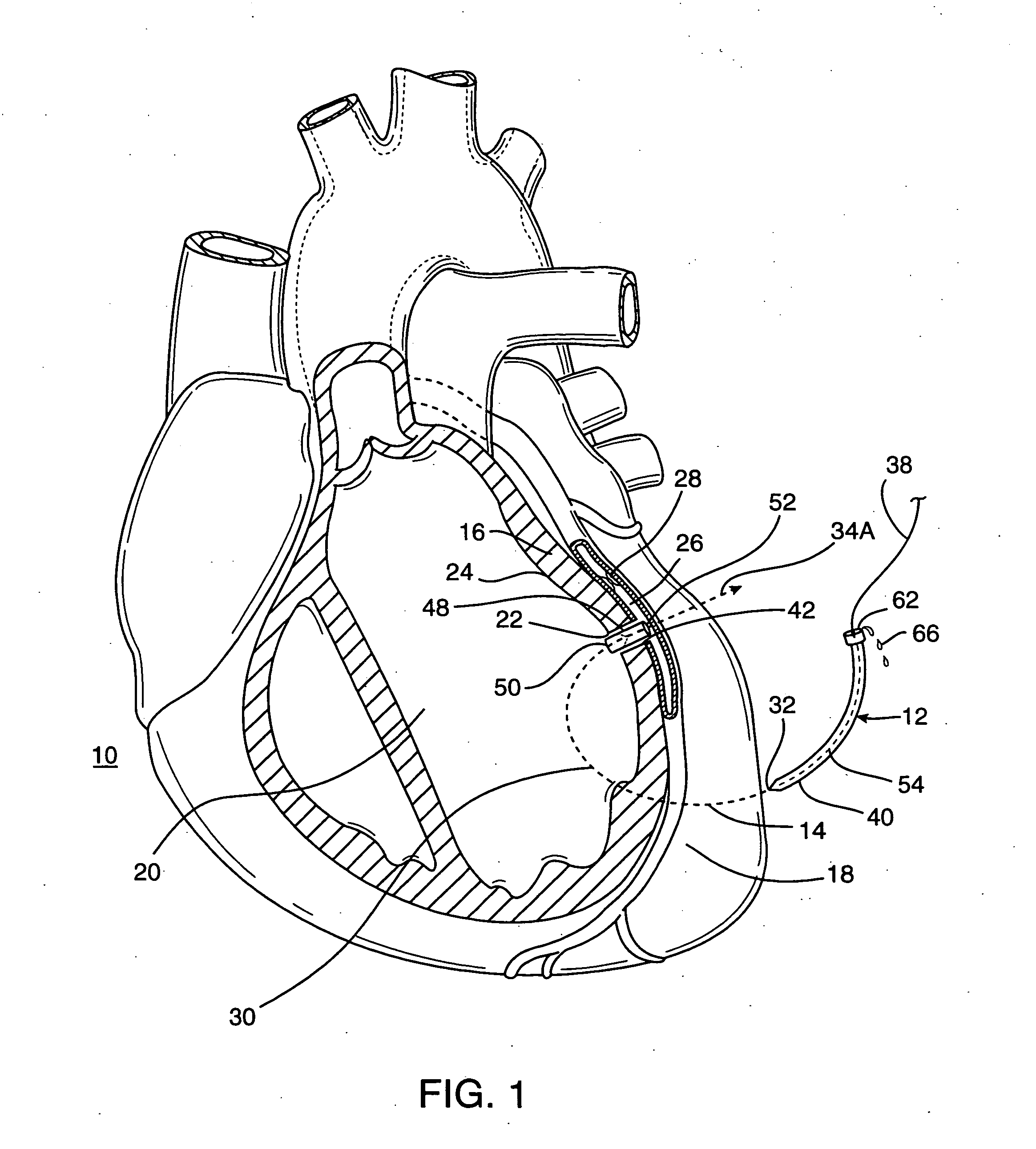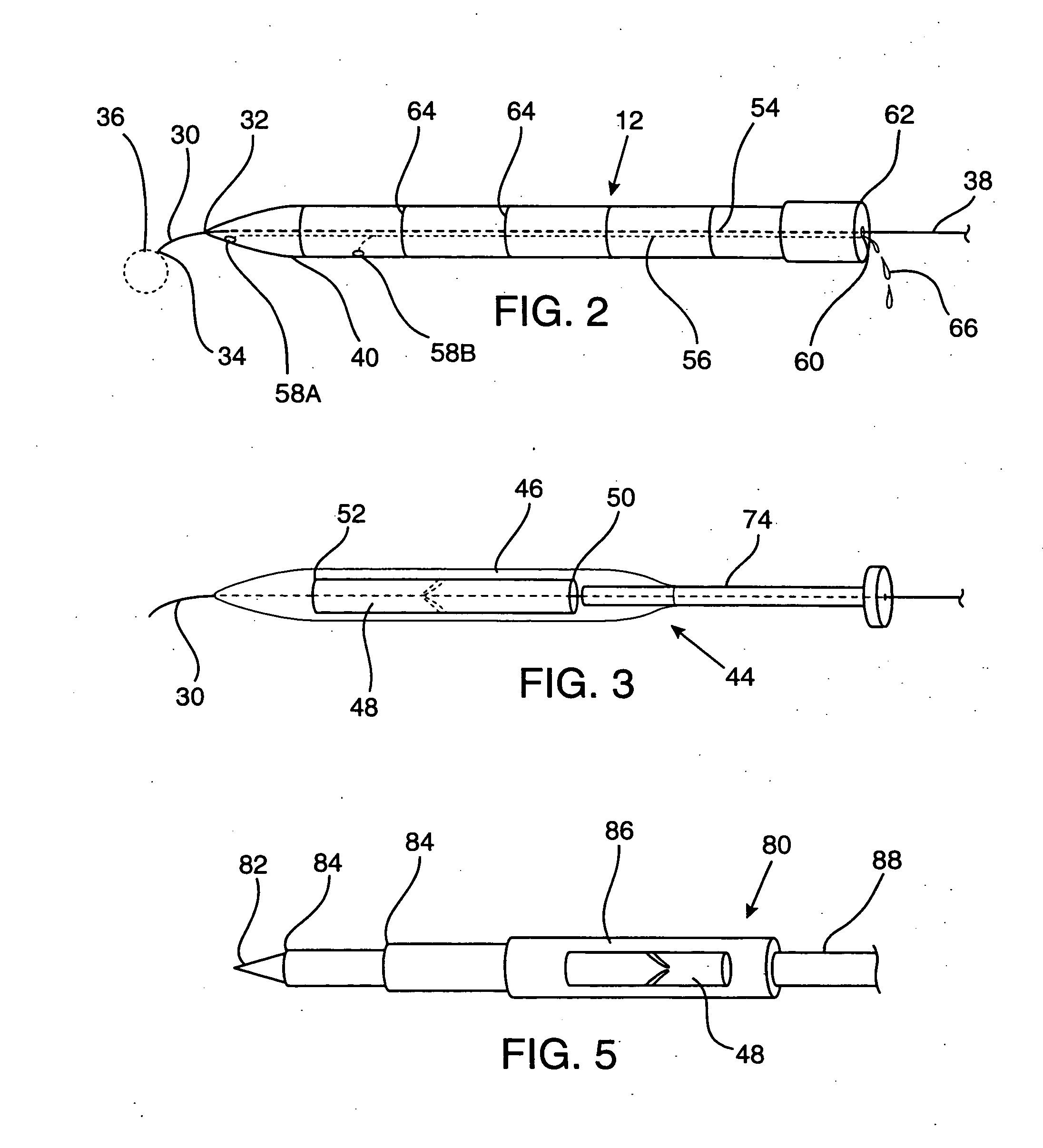Methods and devices providing transmyocardial blood flow to the arterial vascular system of the heart
a technology of arterial vascular system and transmyocardial blood flow, which is applied in the direction of blood vessels, prostheses, data switching networks, etc., can solve the problems of increased chance of air and platelet embolization, increased risk of heart disease patients often dying, and increased risk of heart disease patients being isolated with cpb and aortic cross-clamp. , to achieve the effect of minimizing blood flow and increasing blood flow
- Summary
- Abstract
- Description
- Claims
- Application Information
AI Technical Summary
Benefits of technology
Problems solved by technology
Method used
Image
Examples
examples
[0163] Two sets of experiments utilizing animals were designed to evaluate the acute functionality of the inventive methods. Each experiment was performed on a beating heart. No type of temporary assist or heart-lung bypass technique was utilized. Anesthesia was maintained with oxygen administration in accordance with conventional protocol. ECG was monitored and an arterial monitoring catheter was placed in the left internal mammary artery for assessment of blood pressure.
[0164] The first set of experiments was carried out on seven female Yorkshire pigs weighing 30-35 kg. On four of the pigs, a formal sternotomy was used and in the other three pigs, a left anterior 4th intercostal space thoracotomy was used. A prototype conduit was introduced into the left ventricle through a formal sternotomy with the other end of the conduit introduced into the left anterior descending coronary artery through cannualation. The left anterior descending coronary artery was then tied proximally. In ...
PUM
 Login to View More
Login to View More Abstract
Description
Claims
Application Information
 Login to View More
Login to View More - R&D
- Intellectual Property
- Life Sciences
- Materials
- Tech Scout
- Unparalleled Data Quality
- Higher Quality Content
- 60% Fewer Hallucinations
Browse by: Latest US Patents, China's latest patents, Technical Efficacy Thesaurus, Application Domain, Technology Topic, Popular Technical Reports.
© 2025 PatSnap. All rights reserved.Legal|Privacy policy|Modern Slavery Act Transparency Statement|Sitemap|About US| Contact US: help@patsnap.com



